

Phillips-Multiplane - $$4.50
Phillips's 1904 Multiplane expanded on the 1893 test vehicle in a configuration that could be flown by a person. It utilized 21 wings and had a tail for stability, but was unable to achieve sustained flight. You've probably seen old time movies of this monster trying to take-off only to ungraciously fold up like a taco.
Phillips Multiplane
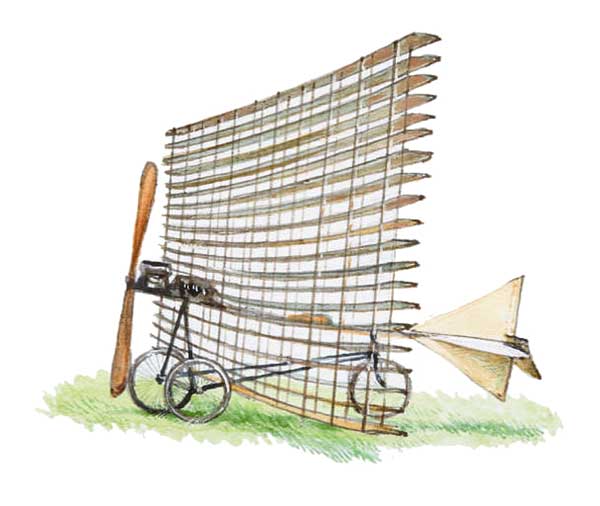
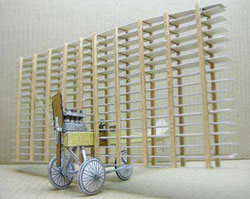
British inventor Horatio Phillips advanced the science of aerodynamics in the 1880s with his careful study of airfoil surfaces. Unfortunately, in his aerial experiments he concentrated on airfoils - as many as possible, it would seem - to the exclusion of pretty much everything else. From 1893 he produced a variety of 'multiplanes', beginning with a 50-wing coal-fired machine that predictably failed to become airborne. The slightly more conventional (20-wing) 1904 Multiplane actually achieved one hop of 50ft, but in 1907 he returned to a version of the 1893 machine with a petrol engine. Some sources say this made a straight-line flight of 500ft, which would have been the first powered flight in Britain. If so, it didn't inspire Phillips to greater heights, as he gave up at this point, having spent $6000, mainly on wings.
Phillips Multiplane
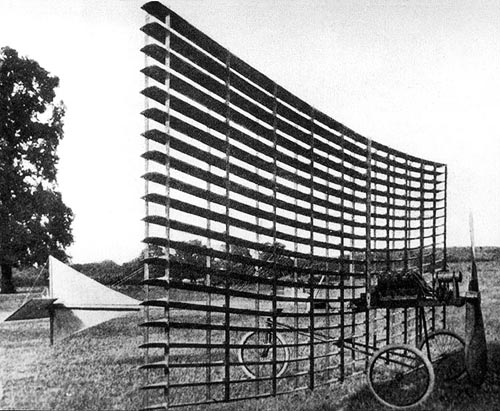 The
theory of multiple lifting surfaces which had been put forward
between 1884 and 1891 was first given practical application by
an Englishman, Horatio F. Phillips, in 1904.
The
theory of multiple lifting surfaces which had been put forward
between 1884 and 1891 was first given practical application by
an Englishman, Horatio F. Phillips, in 1904.
The son of a gunsmith, Horatio Phillips was born in 1845 in a suburb of London. He reportedly became interested in aviation at a young age and closely followed the research being conducted by the Royal Aeronautical Society using a whirling arm and wind tunnel. Phillips felt he could do better and had built his own wind tunnel by the early 1880s.
His wind tunnel used a steam injector to suck air through the apparatus and produced more reliable results than any other wind tunnel of the day. Phillips soon began conducting experiments exploring how curved airfoil sections generated lift.
These experiments were the first to conclusively prove that a cambered shape with greater curvature over the top than the bottom produced more lift than a flat airfoil. Fellow Englishman Sir George Cayley had first theorized this idea in the early 1800s, but it was the experiments of Horatio Phillips that brought widespread attention to curved airfoils.
The importance of these landmark findings was quickly recognized and nearly every subsequent experimenter with gliders or powered airplanes adopted cambered airfoils.
Among these inventors were Otto Lilienthal in Germany as well as Samuel Langley and the Wright brothers in America. Phillips too applied his expertise in airfoils as he began building flying machines of his own.
His first multiplane had 20 superimposed winglets with a width of 3 or 4 inches, rather like a venetian blind. The aircraft had a cruciform tail unit and a three-wheel undercarriage. The engine, built by Phillips himself, drove a two-bladed puller propeller. This aircraft, however, was not a success.
When tested at Streatham it proved unstable and impossible to control. Only three years later, in 1907, was Phillips able to fly 490 feet, using another multiplane some 200 narrow-chord wings.
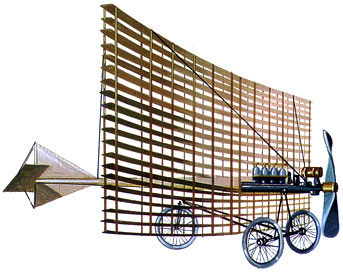
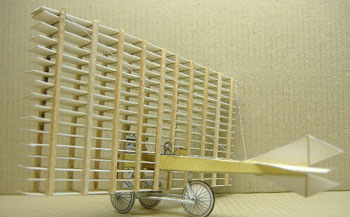 |
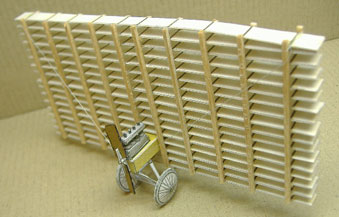 |
Model of the Phillips Multiplane submitted by Bob Martin. Thanks Bob! |
|
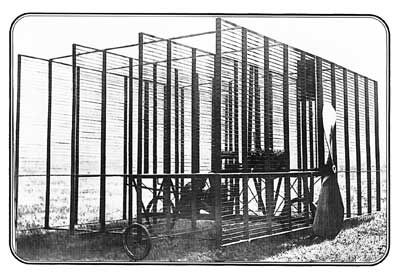 |
Another version of the Phillips Multiplane. |
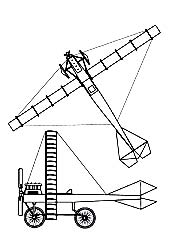 |
Specifications: |
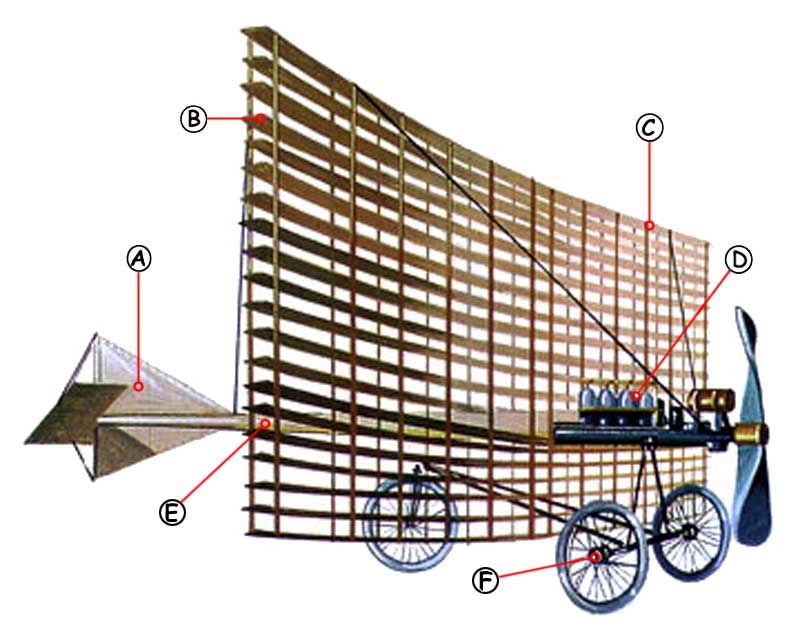 |
||
| A: The tail of the Phillips Multiplane was constructed of fabric and steel tubing. | B: If the wing area of the Multiplane had been distributed over one or two wings it might have been a great success. | C: The overall height of the Multiplane was 10 feet, with a wingspan of 17 feet 9 inches. |
| D: The engine was a 22 hp Phillips Piston Engine which gave the Multiplane and estimated top speed of 34 mph. | E: The frame of the 1904 Multiplane was made of spruce, ash, and steel tube covered with calico fabric. | F: One reason Phillips early experiments failed may have been that he insisted on a circular take-off track rather than a straight runway. |


Shown above are sheets 1 and 2 of the Phillips Multiplane instructions.
This model is included on the
"Those Magnificent Men in Their Flying Machines"
CD


